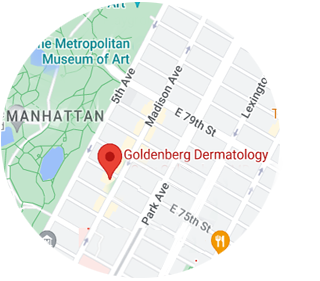
Actinic keratoses are small, pre-cancerous lesions that are found in sun-exposed areas. These lesions tend to form in groups and it is not uncommon to find 10 or 15 on the backs of the hands, face, or top of the scalp. Ultraviolet radiation from the sun causes damage to the skin cells, forming clusters of atypical cells that can progress into squamous cell carcinoma – a common type of skin cancer. The lesions vary in color from beige to red to pink, and patients often complain of itching or irritation at the site of actinic keratosis. Board-certified dermatologists Gary and Kristina Goldenberg are experts in the diagnosis and treatment of actinic keratosis. Dr. Gary Goldenberg has given numerous lectures at national and international meetings and is currently studying actinic keratosis to improve the diagnosis and treatment of these lesions.
Laser Therapy
Laser therapy is the most advanced technology to treat actinic keratosis and prevent its progression into squamous cell skin cancer. These therapies treat lesions with the best efficacy and cosmetic results. Individual lesions can be treated with ExcelV laser – this treatment is virtually painless, the lesion becomes red immediately after therapy and then forms a scab which can take up to 5-7 days to resolve. For patients with numerous lesions, it may be advisable to treat the entire affected area with a resurfacing laser treatment – this treats visible lesions as well those lesions that are subclinical (these lesions may be seen on a microscopic examination but the overlying skin may appear normal).
Topical Therapy
When there are numerous actinic keratoses, one of our doctors may prescribe a topical cream to treat the visible lesions as well as the lesions under the surface. The most common topical treatment for actinic keratoses involves the application of an immune modulator (stimulates the local immune system) imiquimod, topical chemotherapy known as 5 fluorouracil, or a short treatment course product called Picato. Zyclara, the brand name imiquimod, is now available in a pump – this makes the product easy to use. Picato is the newest AK treatment approved by the FDA. The treatment course with Picato is short, with 3 total applications for the face and scalp and 2 total applications for the hands, forearms, and chest. Topical treatment usually produces redness of the skin, so discuss your social schedule with your doctor before starting this treatment.
Dr. Gary Goldenberg has performed numerous published studies, combining topical therapy with destructive therapy to optimize treatment of actinic keratosis in order to prevent progression to squamous cell skin cancer.











